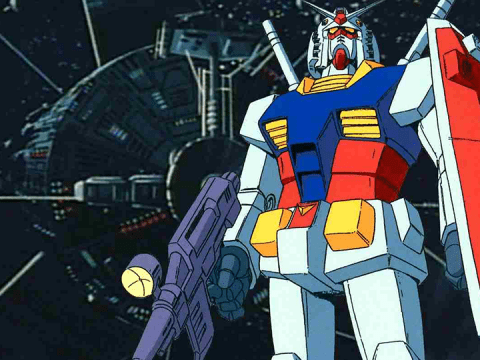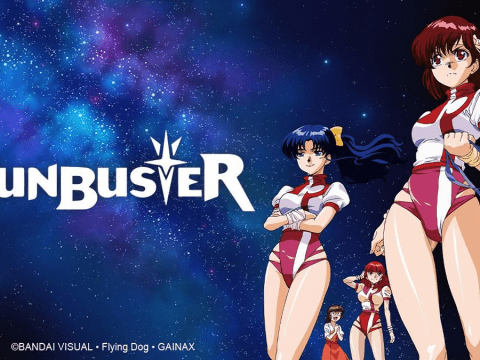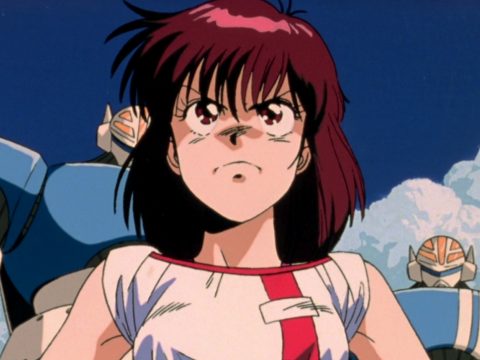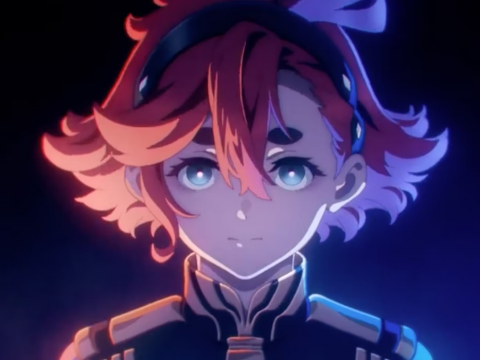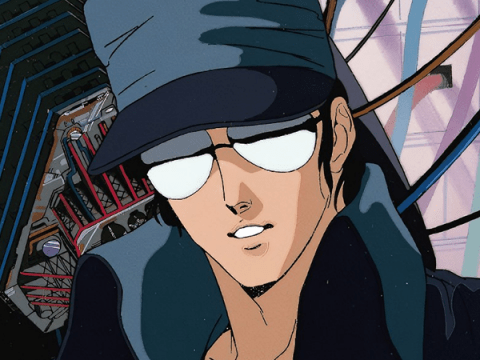
If you’re a fan of FLCL—Gainax’s kinetic, Pillows-infused 2000 OVA that graces the cover of our latest issue—then you’re no doubt an admirer of director Kazuya Tsurumaki. Despite having been involved in Gainax projects since his work as an animation director for select episodes of their 1989-1990 series, Nadia: Secret of Blue Water, it wasn’t until FLCL that he landed his butt squarely in the director’s chair. Tsurumaki’s artistic influence is right there on the table for all to see, and the bouncy, distinct style of FLCL‘s production eventually oozed its way onto the frames of his next full stint in the driver’s seat, Diebuster (2004).
This six-episode OVA sequel to one of Gainax’s most beloved series, 1988’s Gunbuster, is a beast that goes by many names. Whether you refer to it as Top wo Nerae 2 (Aim for the Top 2), Gunbuster 2, or simply Diebuster—preferably in the sing-songy Diebustaaaaaa as heard in the show’s eyecatches—the experience is unlike any children-pilot-mechs-and-fight-aliens show before it. And there are a lot of those.
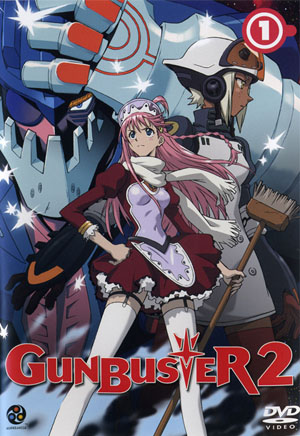 Diebuster‘s plot revolves around Nono, a young girl with big, spacey dreams that stretch way beyond her bumpkin roots. She longs to be a space pilot, something that’s nothing more than pure pie in the sky until she runs into Lal’C, a genuine “Topless.” Don’t let that name excite you too much, though a little excitement is warranted. The name Topless refers to teenage pilots with one big It Factor in common: they all hold within them the ability to pilot giant mecha known as Buster Machines.
Diebuster‘s plot revolves around Nono, a young girl with big, spacey dreams that stretch way beyond her bumpkin roots. She longs to be a space pilot, something that’s nothing more than pure pie in the sky until she runs into Lal’C, a genuine “Topless.” Don’t let that name excite you too much, though a little excitement is warranted. The name Topless refers to teenage pilots with one big It Factor in common: they all hold within them the ability to pilot giant mecha known as Buster Machines.
Once Nono is in position to become a part of this elite group—all of whom enjoy a form of celebrity status due to their unique and impermanent nature and, you know, the fact that only they can save us from space monsters—we’re in true “hard work and guts” territory. Nono focuses a lot of her effort into impressing Lal’C, but that doesn’t stop her from contributing greatly to the fight against space nasties from the cockpit of her Buster Machine, Dix-Neuf, and every frame of that action is rendered with the kind of spectacular fluidity and creativity one would expect of Gainax at the top of their game.
Some time has passed since I actually sat down and watched all of Diebuster, but so much of it still sticks out in my mind. Maybe that’s the power Tsurumaki adds to his projects, because the same can certainly be said of FLCL (and even his recent work on the Evangelion Rebuild films). I could stay away from rewatching FLCL for the rest of my life and still have a good deal of it etched somewhere in my cartoon-addled skull. I don’t know why anyone would want to do that, though. That’s the beauty of short-form series such as these; they’re loaded with ideas and hold the luxury of not having to dilute them over the course of a television season.
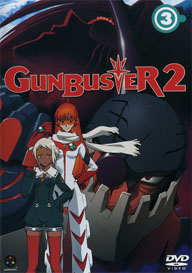 As is the case with any series within the genre, just as much can be said about the mechanical design as the rest of the production. Diebuster has a lot of cool visual concepts floating through from scene to scene, but the bulk of the props have to be handed to Yoshitsune Izuna, who designed the Busters themselves. There’s a bit of conceptual cross-pollination between this and one of his other works, Gad Guard, which should be apparent from the first moment the hulking, human-like frame of Dix-Neuf blasts on screen.
As is the case with any series within the genre, just as much can be said about the mechanical design as the rest of the production. Diebuster has a lot of cool visual concepts floating through from scene to scene, but the bulk of the props have to be handed to Yoshitsune Izuna, who designed the Busters themselves. There’s a bit of conceptual cross-pollination between this and one of his other works, Gad Guard, which should be apparent from the first moment the hulking, human-like frame of Dix-Neuf blasts on screen.
Don’t let the number behind Gunbuster 2 keep you from seeing it just because you’ve never watched Gunbuster. While it’s preferable to see Hideaki Anno’s original first, as the two share a lot of central themes and concepts, Diebuster is in many ways a sequel in name only. It’s not something that picks up right after its predecessor and expects its audience to be privy to hours worth of backstory; it rockets in its own unique trajectory. With that little bit of newcomer encouragement out of the way, I can put my Big Nerd Cap back on again. Watch them both: the first is a classic and the second follows in its footsteps with much more grace and charm than one would expect of a sequel that debuted a few cycles shy of 20 years down the line. Diebuster is, as its bubbly theme song implies, groovin’ magic.


